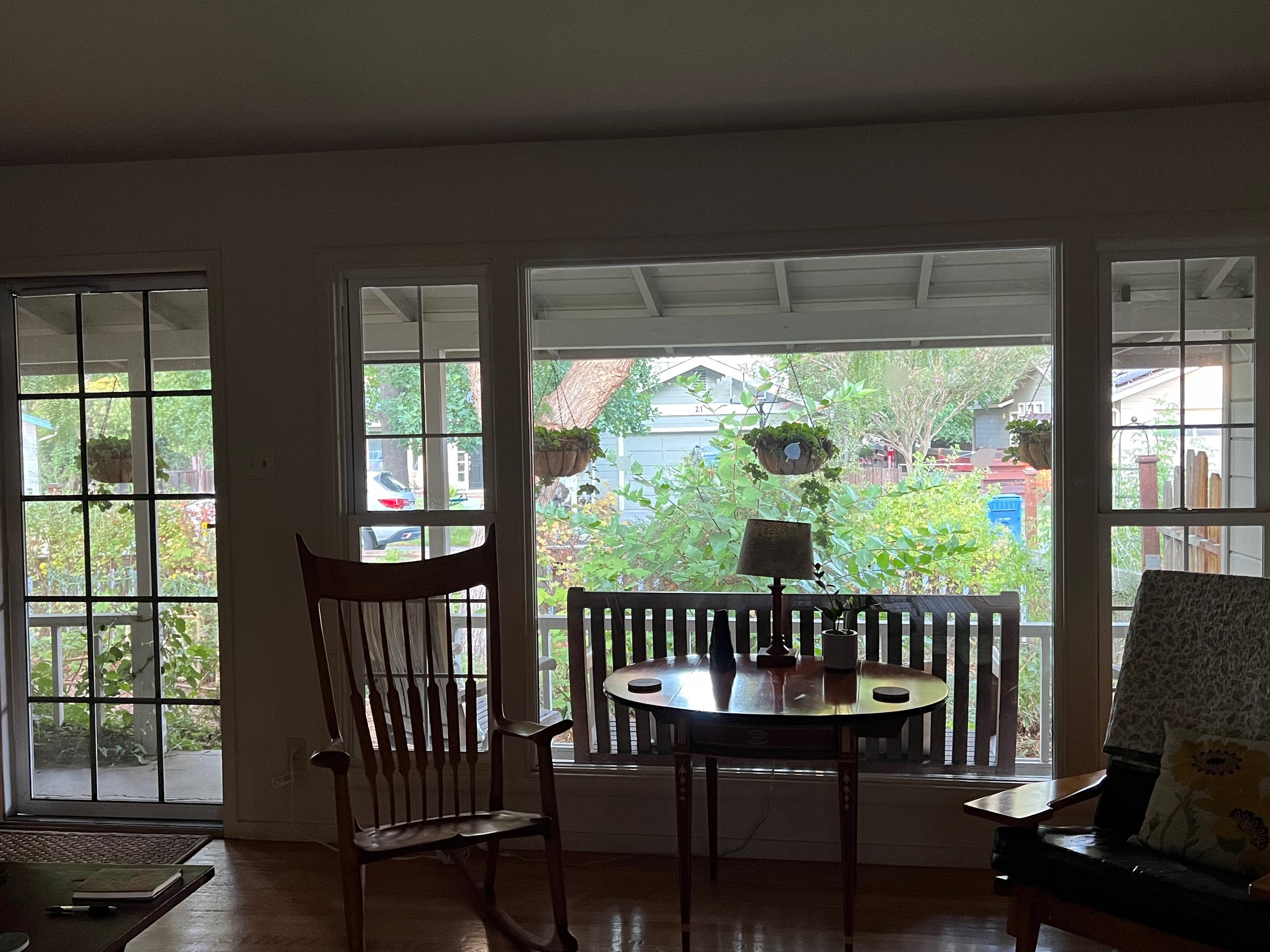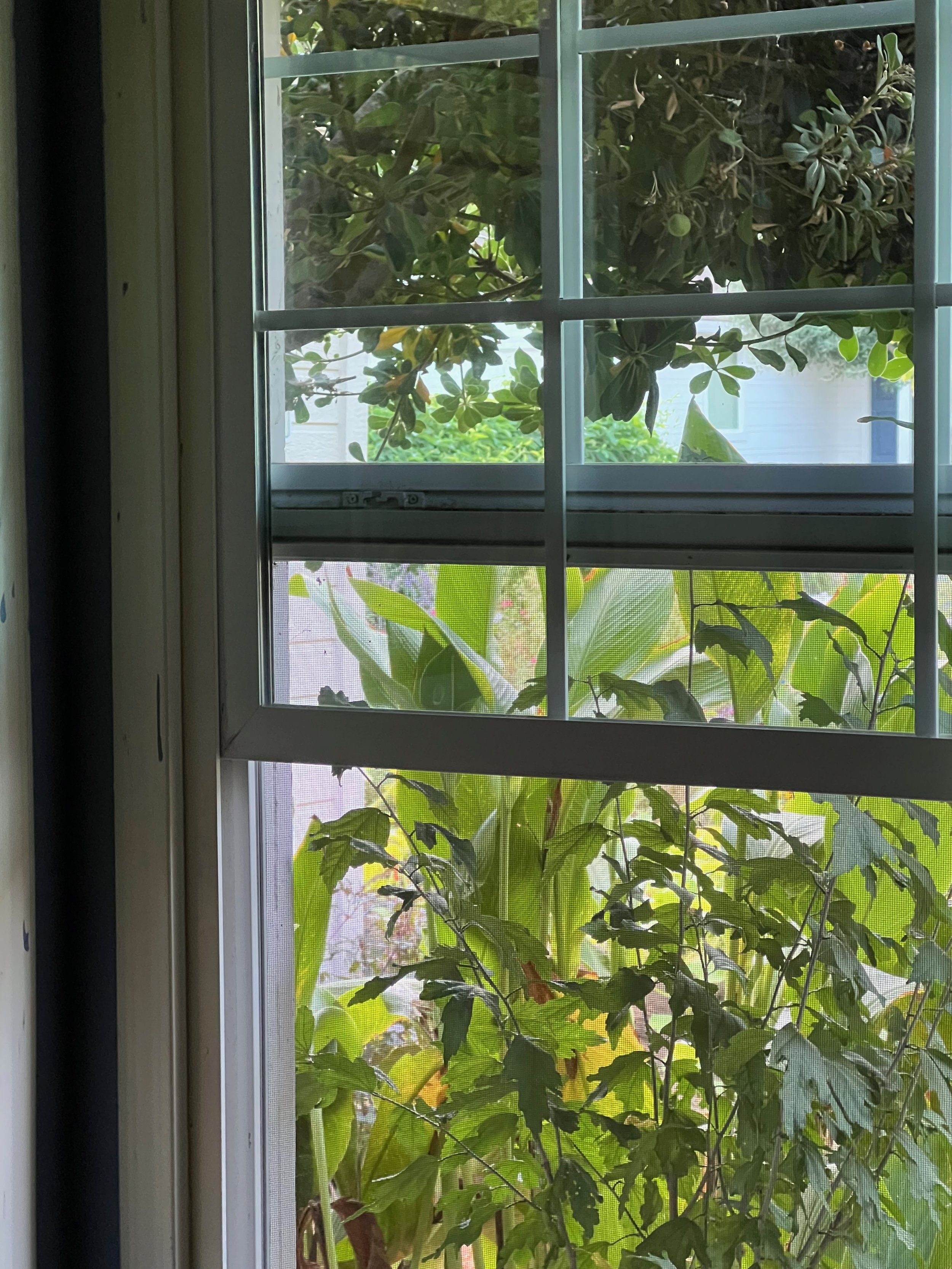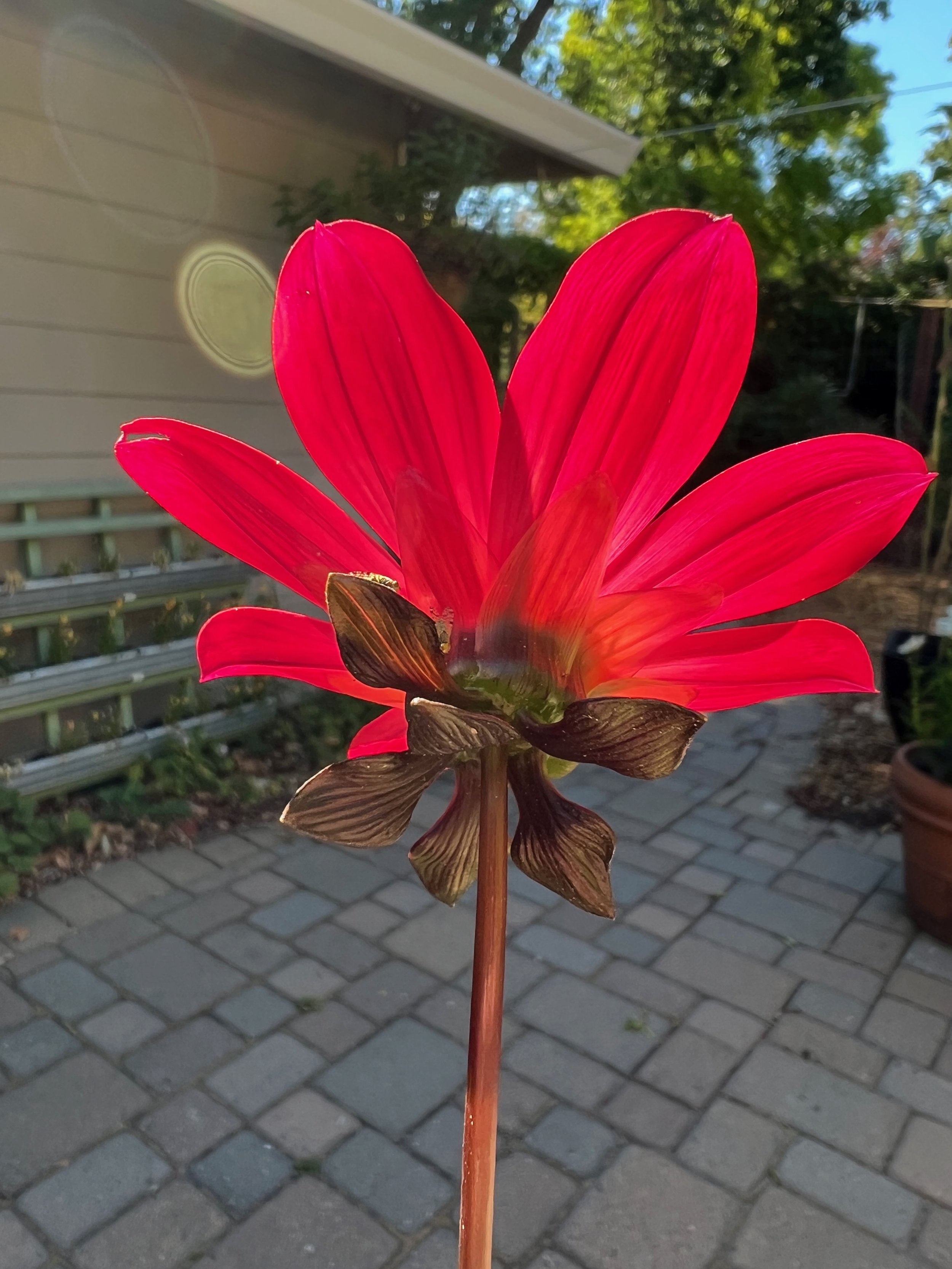Each morning, I am lucky to have a half hour where I can sit and have my coffee and start my day, often with journaling or the newspaper. In warm months, I throw the doors wide open, letting the cool morning air inside. Even when it starts to get a little chilly at night (like now - autumn is on the way, no matter how warm the days feel!), I still like to open the doors and snuggle under one of the quilts Tom’s mom made for us, so many years ago. The cat often sits in my lap and keeps me warm.
I noticed this morning how often I gaze out the windows as I’m drinking my coffee, and what’s so great (and we are so privileged to have) is that outside every window, there is a view of the garden. We can see green from every part of the house, whether I’m sitting on the couch, washing dishes in the kitchen, getting in to bed at night, or hopping into the shower. What a blessing.
I remember reading an article years ago from A Way to Garden, in which the author, Margaret Roach, calls this Garden Design 101. “Look out the window if you want to make a garden,” she writes. After all, when we’re out in the garden, we’re often digging or hauling or planting and don’t really notice how lovely it is. Oh sure, we may have family dinner out there, or tea with friends, but those events are not daily and only in clement weather. Whereas sitting happens more often inside the house. That’s when we really notice the garden.
As I was sitting there this morning, I thought surely there must some research about the positive effects of these window views. And indeed, there is. The Center for the Built Environment at UC Berkeley has published a study titled ‘The impact of a view from a window on thermal comfort, emotion, and cognitive performance.’ In it, the authors state, “visual connection to nature has been demonstrated to have a positive impact on attention restoration, stress reduction, and overall health and well-being. Inside buildings, windows are the primary means of providing a connection to the outdoors, and nature views even through a window may have similar effects on the occupants.” The study concludes that people had an increase in positive emotions in rooms with a window view, which was no surprise. But working memory and concentration were also higher, and folks actually felt cooler, even though the study controlled for temperature.
Another study from the Royal College of Physicians in the UK titled, ‘Gardening for health,’ details all the ways that being in green spaces increases health outcomes for patients. We gardeners and hikers already know that being outdoors in nature is beneficial, but this article states that “several trials have revealed the beneficial effects on mood and mental health of simply observing nature.” They study concludes with “health professionals should try to influence the design of new buildings by insisting that there are views of outside nature from every patient and staff room, and by placing internal plants in atria, communal areas, surgeries, clinics, and staff rooms.”
It’s also been well-documented that plants can reduce both air and noise pollution from the surrounding areas, which is especially helpful in urban areas.
Green spaces in cities is an equity issue; studies show that as income rises, the amount of green space also rises. This just isn’t right. Everyone needs access to green space, and everyone deserves the health benefits that come from having it, and we need to do all we can to provide it.
I know that I’m lucky to have these views from my home, but I’m also among the fortunate few whose workplace also benefits from green views. My desk sits right next to our office back door, and as I work at my computer, I get a slice of the beauty. Now I can also bask in the knowledge that the view is improving my cognitive skills, too!





















